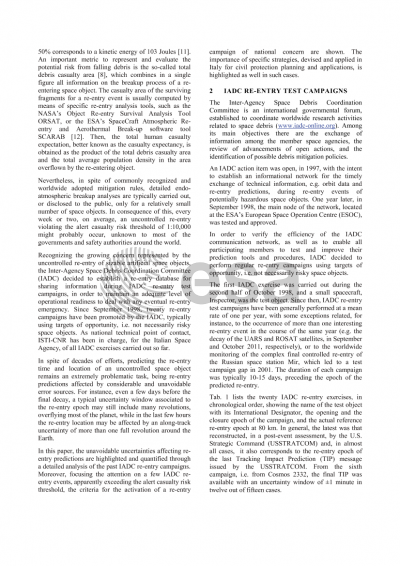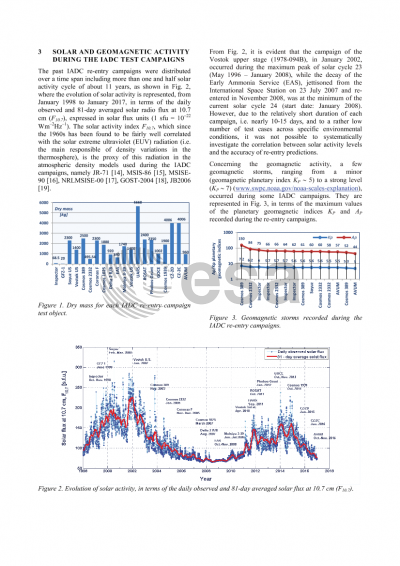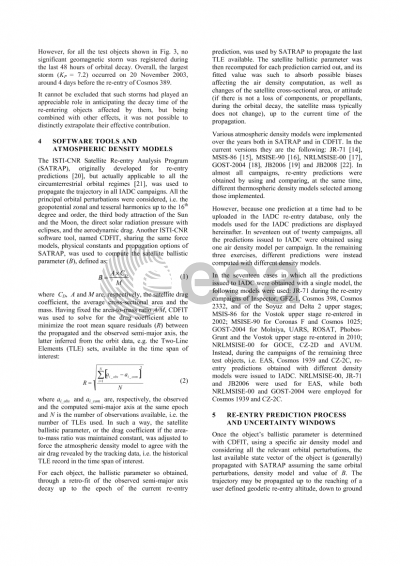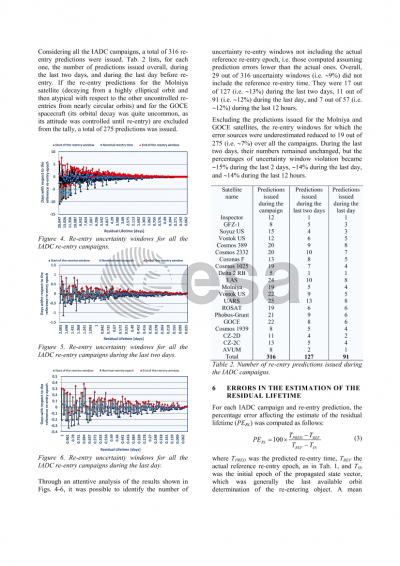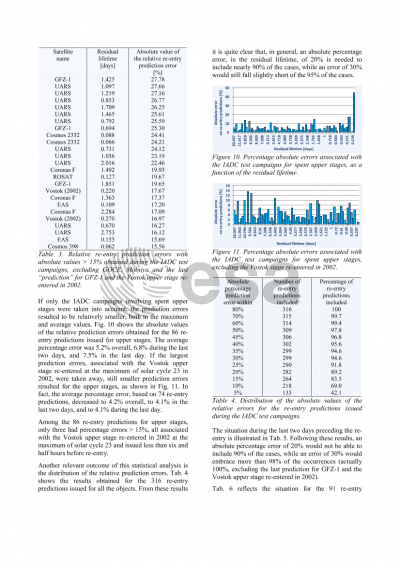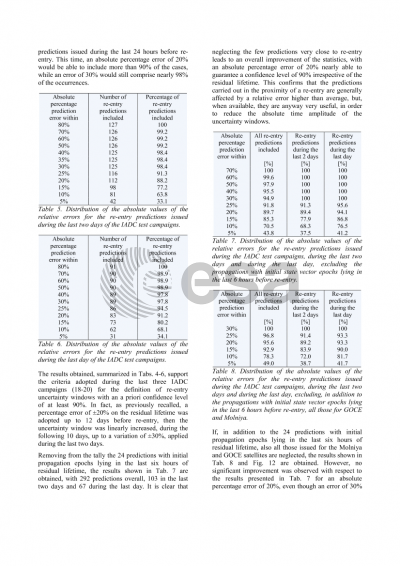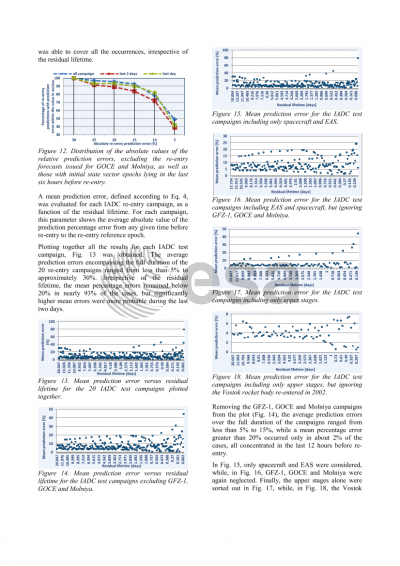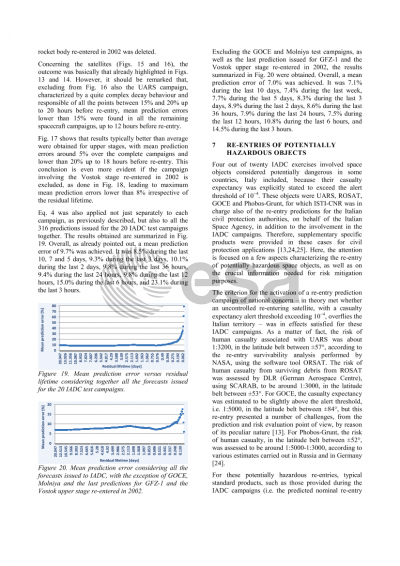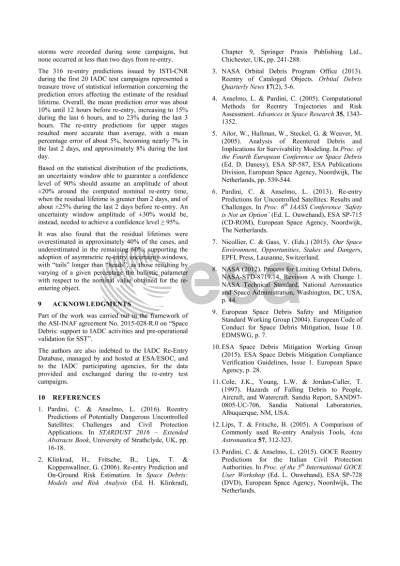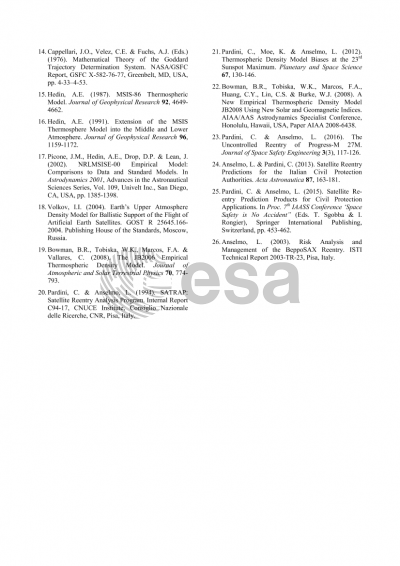Document details

Abstract
As of mid-November 2016 and since the decay of the Sputnik 1 launch core stage on 1 December 1957, approximately 24,000 cataloged orbiting objects have reentered into the Earth’s atmosphere, with a total mass approaching 30,000 metric tons. Nearly 71% were just space debris, while the remaining 29%, accounting for almost 99% of the mass, was represented by intact objects, i.e. spacecraft, platforms and spent upper stages. At present, about 70% of the reentries of intact objects are uncontrolled, corresponding to just one half of the returning mass, i.e. about 100 metric tons per year. Over the last decade, there was typically one sizable spacecraft or rocket body uncontrolled reentry every week, with an average mass around 2000 kg. In spite of almost 1900 metric tons of manmade materials which are suspected to have survived the severe mechanical and thermal loads and hit the ground without control so far, no case of personal injury caused by reentering debris has been confirmed. However, even if still small compared to other commonly accepted risks linked to the lifestyle or the workplace and household safety, the ground casualty risk associated to uncontrolled reentries of sizable space objects could in all likelihood grow, as space activities around the Earth and population on the ground increase. Although specific guidelines to minimize the risk to human life and property on the ground already exist and are adopted by several organizations around the world, only for a small minority of space objects detailed endo-atmospheric breakup analyses are carried out, in order to estimate their reentry casualty risk. Hence, every week or two, on average, an uncontrolled reentry violating the adopted alert threshold guidelines probably occurs, unknown to most of the governments and safety authorities around the world. Recognizing the growing concern represented by the uncontrolled reentry of sizable artificial space objects, the Inter-Agency Space Debris Coordination Committee (IADC) decided to establish a reentry database for sharing information during IADC reentry test campaigns, in order to maintain an adequate level of operational readiness to deal with any eventual reentry emergency. Since September 1998, twenty reentry campaigns have been promoted by the IADC, typically using targets of opportunity, i.e. not necessarily risky space objects. Another critical aspect related to uncontrolled reentries, mainly driven by the atmospheric drag perturbation, is represented by considerable and unavoidable uncertainties affecting the estimation of the reentry epoch and place. For instance, even a few days before the final decay, a typical uncertainty window associated to the reentry epoch may still include many revolutions, overflying most of the planet, while in the last few hours the reentry location may be affected by an along-track uncertainty of more than one full revolution around the Earth. Through a detailed analysis of the results obtained at ISTI/CNR for all the IADC campaigns, as well as for other reentries monitored on behalf of the Italian civil protection authorities, the uncertainties affecting reentry predictions will be highlighted and quantified and the criteria for the activation of a reentry campaign of national concern will be revisited.
Preview

